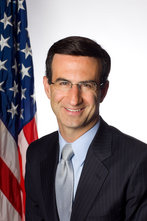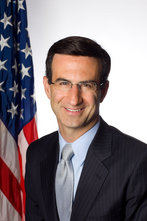Last week, Foreign Affairs editor Gideon Rose interviewed Council on Foreign Relations senior fellow Stephen Biddle on all things Afghanistan.

Here's part of the exchange on how the U.S. would know if it's successful, which takes at least "a whole fighting season and a winter," according to Biddle.
ROSE: So what I hear you saying is that you have a Potter Stewart
definition of success, but not a Potter Stewart definition of failure.
In other words, if it is working you'll see the levels of violence come
down at some point. You'll see things start to stabilize and then you'll
know things are going well. But if that hasn't happened yet, it is hard
to distinguish between "It may happen down the road" and "It's not
going to happen."
BIDDLE: Yeah. And eventually, there's a statute of limitations on
this. I mean, you can't reasonably expect after five or six years to
keep saying, "Well, it'll happen eventually." Again, I think about a
year to 18 months is a reasonable time frame. You have to live through a
whole fighting cycle.
ROSE: So, in effect, you are saying we should have some kind of
mental clock ticking but we should have set it for when the new set of
policies -- the Afghan surge -- essentially began?
BIDDLE: I think that's right. I also think we have to look at the
details of the sequence of things that are happening, rather than just
the aggregate casualty statistics -- especially at the national level.
If the model is working, if COIN is doing what it's supposed to do, a
series of things should happen, more or less in this order: first you
clear the bad guys out, then the bad guys are going to try and
counterattack. You have to expect that and resist it. The counterattacks
eventually tail off and then you have to build up governance. So
there's a series of things that happen.
What I'm advocating in assessing the situation in Afghanistan is that
we do it in a much more disaggregated way. We don't look at whether
July is the largest casualty month in the history of the war at that
national level. That doesn't tell us much. You've got to look at
particular places in terms of their own natural history. When did the
operation start there? At what part of the process should you reasonable
expect a place like Nawa, as opposed to a place like Marjah, to be? And
is what you're seeing consistent with what you would expect for this
moment in the natural history of that place?
In Marjah, I think you could reasonably expect that we're right smack
in the middle of the first major fighting season since the United
States showed up. And this is counterattack time. I think that's
basically what we're seeing. It is a really bad sign if we're still
seeing the same thing next July in Marjah.
Read the full transcript here.














Recent Comments